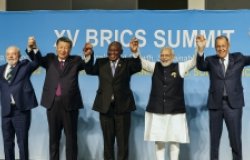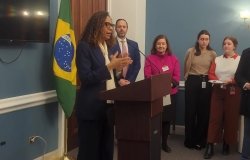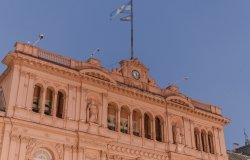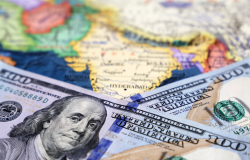Too Soon for a Rally: Brazil's Long Road Ahead
Peterson Institute for International Economics - 3/9/2016
Markets tend to swoon in times of political crisis. It is therefore odd that they are rallying strongly in Brazil by assuming that any change in government would be better than the status quo. Much as one might be tempted to buy into this notion, markets are most likely wrong. When things can’t seem to get worse, they often do anyway.
The stock market is up 16 percent since early January, with the sharpest increase (nearly 20 percent) occurring between February 26 and March 4, the day that former President Luiz Inacio Lula da Silva was forcibly detained for questioning by the Brazilian Federal Police. Reasons for such optimism are neither abundant nor well grounded. They stem from slightly improved prospects for commodity prices, as well as from a general perception that President Dilma Rousseff may not finish her term in office.
Why are markets behaving in such naïve fashion? One reason may be that Brazil has never faced a crisis as all-encompassing and severe. Although it has suffered through many episodes of acute balance of payments distress, fiscal crises, and inflationary spirals, it has never encountered a deep and protracted economic recession, coupled with a political crisis and corruption scandal that threaten to unravel much of the system that has prevailed since the country’s redemocratization of the mid-1980s. Hence, there are no benchmarks by which to gauge current problems, making it extremely difficult to adequately identify the conditions under which a sustained economic improvement could be attained. It is no surprise, then, that many investors have come to assume that Rousseff’s departure would automatically lead to a rebound in growth, even though a persistent slump is just as likely. Leaving aside the political and social upheaval that would probably ensue if Rousseff were to be impeached—the Worker’s Party PT still holds considerable sway over significant parts of the country,—Brazil’s economic problems are severe. A measure of this can be illustrated using Reinhart and Rogoff’s severity index,1 defined as:
Severity index = –(Peak-to-trough percentage change in real per capita GDP2) + Number of years from peak to recovery of prior peak
About the Author


Brazil Institute
The Brazil Institute—the only country-specific policy institution focused on Brazil in Washington—works to foster understanding of Brazil’s complex reality and to support more consequential relations between Brazilian and US institutions in all sectors. The Brazil Institute plays this role by producing independent research and programs that bridge the gap between scholarship and policy, and by serving as a crossroads for leading policymakers, scholars and private sector representatives who are committed to addressing Brazil’s challenges and opportunities. Read more









